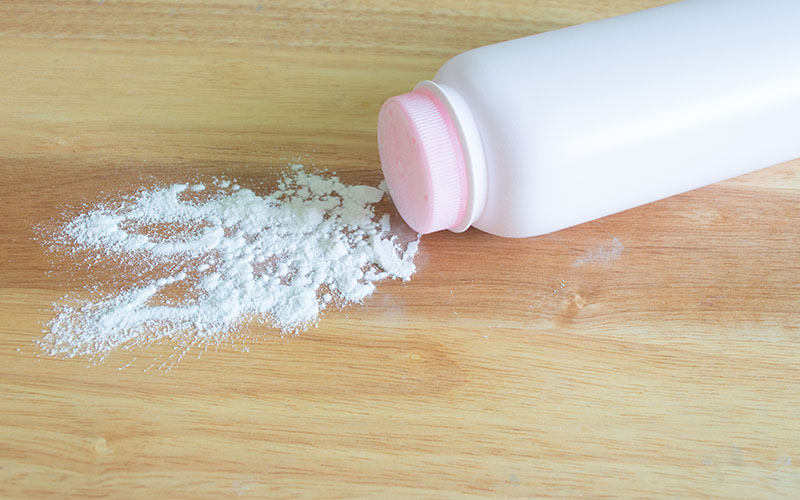Talc has been used in cosmetic products for years. It has a dark side, which is that when improperly purified it can contain asbestos – a known carcinogen. Johnson & Johnson, makers of a talc baby powder, are still settling multi billion dollar (yes, that’s billion with a “b”) lawsuits over it.
MoCRA Requirements
The FDA has been testing talc-containing cosmetic products for the presence of asbestos for several years – and finding asbestos in some of them. MoCRA, passed in December 2022, included a provision that within a year the FDA was to propose regulations to establish and require standardized testing methods to detect and and identify asbestos in cosmetic products containing talc. They did it – only a year late – the proposed regulation was issued December 26, 2024.
The proposal requires that any manufacturer of a talc-containing cosmetic have each batch of the cosmetic product tested for the presence of asbestos. There is a provision for relying on the supplier’s certificate of analysis, but that must be verified by the manufacturer (with testing) at least annually.
The comment period closed March 27, 2025. MoCRA requires that the final rule be issued within 180 days of the close of the comment period (September 27, 2025). The proposed rule says it will become effective 30 days after the final rule is issued.
Administrative Priority Changes
President Trump’s Executive Order to reduce regulations may possibly affect the issuance of the final rule for asbestos testing in talc-containing cosmetic products. He put a hold on implementing new regulations, but there was also a proviso that it didn’t apply to regulations mandated by statutue (such as MoCRA). We’ll have to see how that plays out.
Meantime, the new head of Health and Human Services, Robert F. Kennedy, Jr., and the new head of the FDA, Dr. Martin Makary have been focusing on the safety of food and drug ingredients. Talc is used in food and drugs as well as cosmetics, so it’s in the spotlight on several different fronts.
In May, Dr. Makary hosted the Independent Expert Panel to Evaluate Safety and Necessity of Talc in Food, Drug, and Cosmetic Products. As part of the HHS and FDA program to increasee transparency, it was open to the public, live-streamed, and the video is available online.
I have to admit, I didn’t watch the whole thing. But what I’ve gotten is that there is a possibility that talc may be banned or restricted as a component of food, drugs, and cosmetics.
Why it Matters
The current actions being taken regarding talc matter for two reasons:
1. It Signifies Change
After years of investigating and monitoring talc, it looks like there will be actual action taken, and it is being done quickly and with transparency. This is sort of new for the FDA.
And, if talc is actually banned as a cosmetic ingredient it will be the first one in a LONG time. (There are only 9, and other than plastic micro-beads, they were all banned over 40 years ago). It could create a path whereby additional unsafe (or questionable) ingredients could be banned.
2. Testing or Reformulation Will Be Required
If you make a cosmetic product that contains talc, consider reformulating now (rather than waiting “to see what happens”). If talc is allowed, there will be testing requirements if you use it; if it’s banned, you’ll need to reformulate anyway.
Depending on the functional use of talc in your product, it could possibly be replaced by a clay such as kaolin or bentonite, or a plant-based starch; corn starch and tapioca starch are excellent in powder products.


Leave a Reply